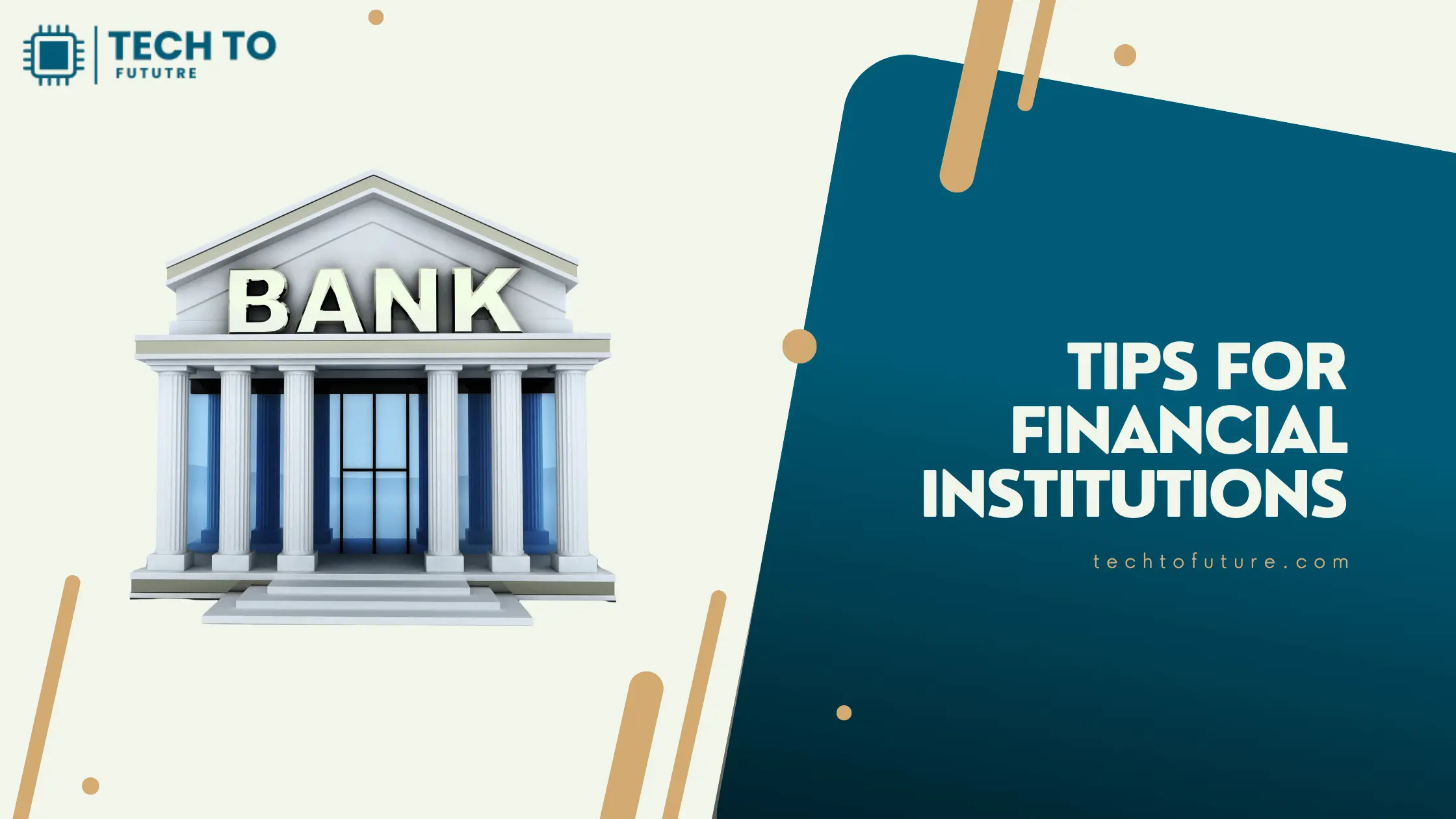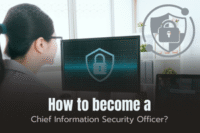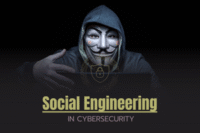Top 5 Tips for Cybersecurity in Banking: Explore now
Published: 29 Jul 2025
Nowadays, online safety is a necessity. It is even more urgent when we discuss the banking world since enormous stakes are involved in customer data and the money supply. This is why strong Cybersecurity in Banking is essential.
It safeguards financial institutions from phishing, ransomware, and DDoS attacks. Take the 2016 Bangladesh Bank heist as an example: hackers exploited weaknesses in the bank’s systems and stole $81 million.
This single cyber incident demonstrated the destructive power of a single attack on a financial institution. How can we safeguard our money and information in the digital era? This blog will explain why Cybersecurity is essential in banking and how it can be applied to other sectors, and provide some tips on remaining safe.
Cybersecurity for Financial Institutions
What Are Financial Institutions?
Financial institutions, such as banks, credit unions, investment firms, and insurance companies, manage vast amounts of customer data, including account numbers, social security numbers, and transaction records.
As a result, financial institutions have become key targets for cyber threats. Hackers are often driven by the desire to steal funds, access sensitive data, or cause disruptions to services. Without robust cybersecurity practices, these organizations remain at high risk of falling victim to such attacks.
Common Threats to Financial Institutions
Phishing Attacks
Phishing remains a top concern in Cybersecurity, consistently posing a significant risk to individuals and organizations. Cybercriminals create fake emails or messages that look like they’re from reputable, trustworthy sources. They aim to manipulate individuals into divulging passwords, account details, or other confidential information.
Example: A bank employee could receive an email that looks like it’s from their boss, asking them to transfer money to a particular account. If they’re tricked, the bank ends up losing funds.
Ransomware Attacks
Ransomware locks an organisation’s data until a ransom is paid. In some cases, hackers encrypt files so they can’t be accessed.
Example: In 2021, a major U.S. pipeline company experienced a ransomware attack. The hackers demanded millions of dollars, causing significant disruption to fuel supplies.
Distributed Denial of Service (DDoS) Attacks
A DDoS attack sends too much traffic to a website or network, making it stop working for users. This can paralyse a financial institution’s online services, frustrating customers and damaging the bank’s reputation.
For example, in 2022, a central U.S. bank suffered a DDoS attack that disrupted online services for over 12 hours, costing the institution millions in lost revenue.
Tips for Financial Institutions

Use Multi-Factor Authentication (MFA)
MFA enhances security by adding an extra step of verification. For instance, users might also need to input a code sent to their phone after entering a password.
Train Employees
Many cyber incidents happen because employees aren’t aware of cybersecurity risks. Regular training can help them spot phishing emails and other threats.
Update Software
Outdated software frequently contains security gaps that hackers can take advantage of. Regular updates fix these issues and improve security.
In Community Banks: Cybersecurity in banking
What Are Community Banks?
Community banks are smaller financial institutions that focus on serving local communities. Unlike large banks, they often have limited budgets and smaller teams.
This makes them more vulnerable to cyber threats. Without the resources to invest in advanced cybersecurity measures, community banks risk falling victim to cyberattacks.
A community bank in Texas has partnered with a local cybersecurity firm to implement MFA, reducing phishing incidents by 70%.
Challenges for Community Banks
Limited Budgets
Community banks often have smaller budgets for Cybersecurity. This means they may be unable to afford expensive tools or hire experts.
Smaller Teams
With fewer employees, community banks may lack the expertise to handle complex cybersecurity threats.
Solutions for Community Banks
Partner with Cybersecurity Firms
Many cybersecurity companies offer affordable packages for small businesses. These firms can provide tools like firewalls, antivirus software, and monitoring services.
Use Cloud-Based Tools
Cloud-based solutions are often more cost-effective than on-premise systems. They also provide better protection against cyber incidents.
Share Resources
Community banks can work together to share resources and knowledge. This can help them stay protected without spending too much.FF
Cybersecurity for Financial Services
What Are Financial Services?
Financial services include insurance companies, investment firms, and payment processors. These organisations handle sensitive data and are just as vulnerable to cyber threats as banks.
Why Cybersecurity Matters for Financial Services
A data breach in the financial services sector can have serious consequences. For example, hackers might steal customer information and sell it on the dark web. This can result in identity theft and financial damage.
According to an IBM report, the average cost of a data breach in the financial sector is $5.4 million.
Best Practices for Financial Services
Multi-Factor Authentication (MFA)
MFA is essential for protecting sensitive data. It ensures that hackers can’t access accounts even if passwords are compromised.
Monitor Transactions
Financial services companies should keep an eye on transactions for unusual activity. This can help detect and stop fraud before it causes damage.
Have a Response Plan
Every organisation should have a plan for responding to cyber incidents. This includes notifying customers and taking steps to fix the problem.
These practices align with industry standards like the NIST Cybersecurity Framework, which is widely used in the financial sector.
Cybersecurity in Other Industries
Cybersecurity for Healthcare
Hospitals and medical facilities handle sensitive patient data, making them a cyberattack target. For example, hackers might steal medical records or disrupt hospital systems.
| Tip |
|---|
Use strong encryption to protect patient data and train staff to recognize phishing emails. |
Cybersecurity for Schools
Schools are increasingly using technology, which makes them vulnerable to ransomware attacks. In 2021, a school district in New Jersey was hit by ransomware, forcing it to shut down its systems.
| Tip |
|---|
Install firewalls and antivirus software to protect school networks. |
Cybersecurity for Manufacturing
Manufacturing companies depend on industrial control systems to operate their production lines. If these systems are hacked, it can cause significant disruptions.
Example: In 2010, the Stuxnet virus targeted industrial systems in Iran, causing significant damage.
Cybersecurity for Law Firms
Law firms handle private client information, like contracts and personal details. If this data is stolen, it can cause significant legal and financial problems.
| Tip |
|---|
Encrypt files and use secure communication tools to protect client data. |
Cybersecurity and Data Privacy
Why Data Privacy Matters
Data privacy is now a significant issue for both businesses and individuals. Cyberattacks can result in data breaches, revealing sensitive information such as passwords, credit card numbers, and personal details.
Regulations like GDPR (General Data Protection Regulation) and CCPA (California Consumer Privacy Act) mandate that organizations safeguard customer data. Failing to do so can result in hefty fines and a loss of trust.
Cybersecurity in Chicago
Chicago-based businesses can take steps to protect their data. For example, attending local cybersecurity workshops or partnering with Chicago-based cybersecurity firms can help improve security.
Emerging Trends in Cybersecurity
Fintech Cybersecurity
Like mobile banking apps, Fintech companies handle large amounts of customer data. Many fintech firms use blockchain technology to protect this data, ensuring secure and transparent transactions.
Example: Blockchain can prevent fraud by verifying transactions in real time.
Blockchain in Fintech Cybersecurity
Blockchain technology ensures secure and transparent transactions using cryptographic methods to verify and record data. This makes it very hard for hackers to alter or steal information.
AI-Powered Threat Detection
AI-powered tools examine patterns in network traffic to identify unusual activity, such as phishing attempts or unauthorized access, and respond immediately.
Emerging trends like AI-powered threat detection are revolutionizing how Fintech companies protect their data.
Also Read: The Role of Machine Learning in Cybersecurity
Maritime Cybersecurity
Ships and ports are increasingly using technology, making them vulnerable to cyberattacks. For example, hackers could target navigation systems, causing vessels to lose their way.
New technologies, such as IoT-enabled monitoring, are assisting ships and ports in maintaining security.
IoT-Enabled Monitoring
New technologies, such as IoT-enabled monitoring, are helping ships and ports stay secure by offering real-time data on system performance and potential vulnerabilities.
| Tip |
|---|
Regularly update software on ships and ports to protect against threats. |
Automotive Cybersecurity
Modern cars have innovative technology, such as GPS and entertainment systems. Hackers can exploit these systems to steal data or even control the vehicle.
AI in Automotive Cybersecurity
Modern cars use AI to detect and prevent cyberattacks on their systems, such as unauthorized access to GPS or entertainment systems.
| Tip |
|---|
Regularly update vehicle software to protect against vulnerabilities. |
Conclusion
Finally, we explained that Cybersecurity is essential for protecting financial institutions and other industries from cyber threats. Whether it’s a large bank, a community bank, or a school, every organisation needs strong cybersecurity measures to stay safe. Cybersecurity in banking is no longer optional; it’s essential.
Financial institutions can protect their data and maintain customer trust by implementing tools like MFA, training employees, and staying updated on the latest threats. So, what steps are you taking to secure your systems? Explore cybersecurity services tailored to your industry to stay ahead of the curve.
FAQs
Phishing attacks are the most common.
Many cybersecurity firms offer affordable packages for SMBs.
AI-powered tools help detect and address threats faster.
Tips for Readers
- Use strong, unique passwords for online banking.
- Turn on two-factor authentication (2FA) for all accounts.
- Be cautious of emails asking for personal information.
- Periodically review your bank’s cybersecurity policies and recommend improvements.
- Consider investing in cyber insurance to protect your business from financial losses due to cyberattacks.
Disclaimer: This article aims to offer general insights into Cybersecurity in banking and is not a substitute for professional advice. For tailored guidance, consult a cybersecurity expert.

- Be Respectful
- Stay Relevant
- Stay Positive
- True Feedback
- Encourage Discussion
- Avoid Spamming
- No Fake News
- Don't Copy-Paste
- No Personal Attacks

- Be Respectful
- Stay Relevant
- Stay Positive
- True Feedback
- Encourage Discussion
- Avoid Spamming
- No Fake News
- Don't Copy-Paste
- No Personal Attacks






